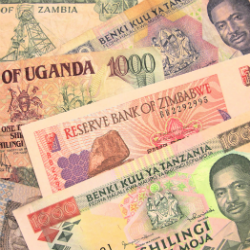
Sectors that were important in the base year will continue to appear important despite structural changes that may have occurred, while sectors that were unimportant or not existing will barely have an impact on GDP. The data sources and the use of proxies are set in the base year – so even when information is becoming available, national accountants may be unable to add them. When the base year is out of date, the GDP series is becoming unreliable. The IMF statistical division recommends a change of base year every five years. In the case of Ghana, their previous base year was made in 1993. Quite obviously, the structure of the economy has changed radically since then. It turned out that since 1993 almost half of the Ghanaian economy had gone missing from the official count. Currently, only a handful of countries have a base year within the past 5 years. The median base year is 2000, whereas some countries, like Nigeria with a base year from 1990, has not had a reasonably up to date picture of their economy for more than two decades.
My book, 'Poor Numbers: how we are misled by African development statistics and what to do about it', presents a study of the production and use of African economic development statistics. I emphasise that this is just not a matter of technical accuracy – the arbitrariness of the quantification process produces observations with very large errors and levels of uncertainty. This ‘numbers game’ has taken on a dangerously misleading air of accuracy and the resulting figures are used to make critical decisions that allocate scarce resources. International development actors are making judgments based on erroneous statistics. Governments are not able to make informed decisions because existing data is too weak or the data they need does not exist.
It is a real tragedy that the statistical capacities of Sub-Saharan African economies are in such a poor state. African development statistics tell us less than we would like to think about income, poverty and growth in Sub-Saharan Africa. One of the most urgent challenges in African economic development is to devise a strategy for improving statistical capacity. This system currently causes more confusion than enlightenment. However, governments, international organizations and independent analysts do need these development statistics to track and monitor efforts at improving living conditions on the African continent.




